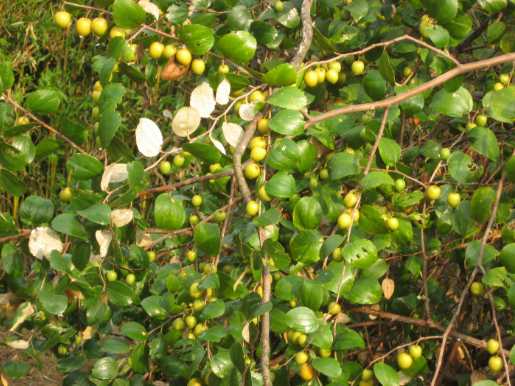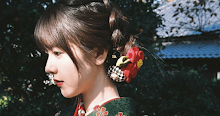Types of Bidara Fruit - There have been many articles that have written about this one plant both in print and electronic media, but it could be that not many people are interested in getting to know this extraordinary plant. Well, this paper will make the reader very curious and interested in getting to know and use this plant more. Bidara, or in Arabic known as this sidr, is a plant originating from Arabia, a small, always green, fruit-producing plant that grows in the tropics and West Asia and can grow in valleys up to a height of 500 m above sea level.
Types of Bidara Fruit
| Description | Upas Bidara |
Sea Bidara |
Chinese Bidara |
Putsa / Indian Apple |
Arabian Bidara (Sidr) |
|---|---|---|---|---|---|
| Kingdom | Plantae | Plantae | Plantae | Plantae | Plantae |
| Division | Eudikotil | Magnoliophyta | Magnoliophyta | Magnoliophyta | Magnoliophyta |
| Class | Asteridae | Magnoliopsida | Magnoliopsida | Magnoliopsida | Magnoliopsida |
| Order | Solanales | Rosales | Rosales | Rosales | Rosales |
| Family | Convolvulaceae | Rhamnaceae | Rhamnaceae | Rhamnaceae | Rhamnaceae |
| Genus | Merremia | Ziziphus | Ziziphus | Pyrus | Ziziphus |
| Species | M. mammosa | Z. mauritiana | Ziziphus | Pyrus malus L. | Z. spina christi |
| Binomial name |
Merremia mammosa Hall F. |
Z. mauritiana | Z. ziziphus | Pyrus malus L. | Ziziphus spina-christi (L). Desf. |
Upas bidara
Types of Bidara Fruit - Bidara upas is a plant that can split 3-6 m. The leaves are oval in shape, with a base of heart shape. The umbrellas are like potatoes, and different from the areuy carayun (Merremia peltata) which is one genus with it. Upas bulbs gather up to 6-7 fruits and can weigh up to 5 kg or more like growing on dry, loose soil and not inundated. The color of the tuber skin is brownish yellow, the skin is gummy white, when it is dry the color becomes brown.Otaheite Gooseberry | Cermai Benefits For Better Life
The inflorescences are compound, that is, 1-4 flowers, umbrella shape, light white, and the eyes become fruit, the petals do not fall. The seeds are gray to black, with brownish hair edges.
The conclusion that I took that this bidara upas is not a bidara tree which is mentioned in the Al-Quran AL WAAQI'AH verse 28: is among the thorny bidara trees. Even the Upas bidara cannot be called a tree because the trunk is propagating, only the name is the same.
Marine bidara
Types of Bidara Fruit - Marine bidara (Ziziphus mauritiana) is a fruit-producing tree that grows on the coast or on the seafront.Cempedak | Benefits For Better Life
This sea lion fruit tastes sour and yellow fruit color even though it is old, and the tree is thorny, but its thorns are bigger than the thorns of thorny trees from the Arab region.
Chinese bidara
Types of Bidara Fruit - Chinese bidara, magnoliopsid genus zizyphus or additionally referred to as shrub (from Greek ζίζυφον, zizyfon), ordinarily referred to as jujube (sometimes jujuba), red dates, Chinese dates, Korean dates, or Indian dates square measure magnoliopsid genus or bidara species within the Rhamnaceae ( Rhamnaceae), as a shady tree that additionally produces fruit.Watermelon Smoothie - Healthy body and Delicate Face With Black Flecks Free Watermelon
Chinese bidara is a small tree or shrub with a height of 5-10 meters (16-33 feet), usually with spiny branches. Leaves are shiny green, ovoid-acute, 2-7 cm (0.79-2.8 in) and wide 1-3 cm (0.39-1.2 in) wide, with three striking veins at the base, and margins smooth jagged. The flowers are small, 5 millimeters (0.20 inches), with five striking yellowish green petals. This fruit is an oval with seeds that can be eaten, mixing adults is smooth-green, with consistency and taste of apples, the color of fruits that are ripe to purplish and finally wrinkled, look like small dates. There is one seed and is hard similar to seeds.
Putsa / Indian Apple
Types of Bidara Fruit - Putsa or Indian apple verse See the botanical name that originated from wikipedia actually does not belong to the type of bidara, but entered in the type of pear, but when viewed from the shape of the leaves and seeds hard I am sure this is still one type of bidara and there are similarities with Chinese bidara. This putsa tree is as big as an apple and sweet bread without sour taste, and the tree is not spiny.Arabian bidara (Sidr)
Types of Bidara Fruit - A bidara from the Arab country (ziziphus spina christi) or known as Christ's Thorn Jujube ("Christ's thorn crown"), is a kind of small, ever-green tree, a fruit producer that grows in the Tropics and West Asia. Grows in Israel in valleys up to 500 m.Ziziphus spina-christi has important significance for Jews, Christians and Muslims. According to a number of traditions, there is a tree producing thorny branches that are woven into "crown of thorns" and placed on the head of Jesus Christ before His crucifixion.
What is Bidara Fruit
The ripe fruit can be eaten and the flowers become important in honey in Eritrea and Yemen. This Bidara leaf is commonly used to carry out sunnah. This type of bidara leaves are sought after for the purposes of Sunnah, Ruqyah, and magic treatment.
The bidara fruit used to ward off magic / jinni in the process of rukyah and other purposes such as the prophet's sunnah is Arabic Bidara (Ziziphus spina-christi), because He (the Prophet Muhammad) used this bidara in the areas of Mecca and Medina.
This type of Bidara Sidr is very much sought after for the purposes of sunnah and magic disturbances. This type of bidara is what we sell for the treatment of magic disorders and others according to the recommendations of the Prophet Muhammad.
For other bidara leaves, I do not know for sure what can be used for sunnah purposes or not, so I will use I personally use this bidara leaf, because at that time the Prophet Muhammad used the lote leaves in the area of Mecca and Medina. Wallahu A'alam answered.
source:
wikipedia
bbppketindan.bppsdmp.pertanian.go.id

















0 comments: